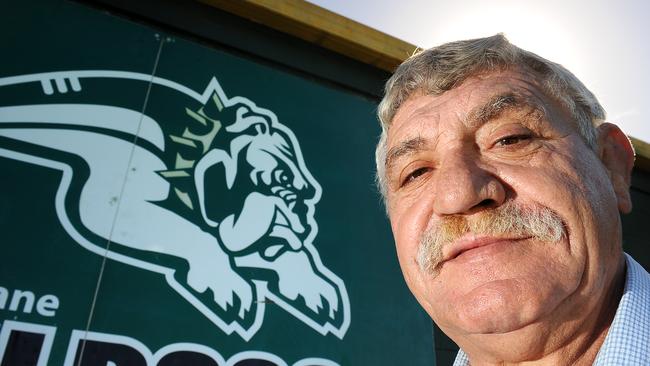Vale Stan Pilecki, the hardman of Queensland and Australian rugby
The way Mark Loane relates the story, Stan Pilecki was born underneath a tractor on a German slave farm during WWII.

The way Mark Loane relates the story, Stan Pilecki was born to a Polish mother underneath a tractor on a German slave farm in Augustdorf sometime during World War II.
The story was told to him by Pilecki himself but Loane, one of Australia’s leading ophthalmologists and always a clear-eyed thinker, was always just a little dubious.
“But if it wasn’t true, it deserved to be true,” said Loane.
“Everything about him was larger than life.”
The tale of his birth, however colourful, turned out to be a slight exaggeration. Stan’s mother, Miroslawa, and her family were taken to Germany to repair railway lines damaged by Allied bombing, but she did not meet her husband, Ignacy, until they met in a British-run refugee camp in Paderborn in 1946. Stanislaw was not born until February 4, 1947 — though it was true, in Augustdorf.
Sadly, there was no exaggeration yesterday when reports of Pilecki’s death began to circulate. It didn’t seem possible but a man who had given rise to more legends than arguably any other Wallaby had passed away, quietly at his home, at what — for him — was the astonishing age of 70. Twenty years ago, 10 years ago, not one of his friends would have given him a chance of achieving the proverbial three score and 10.
I confess that as his ghostwriter for a column that started originally in The Telegraph and then moved across to The Courier Mail, I may have been responsible for some of those legends. Some indeed, may even have been true.
There is the story of his run-in with Steve Finnane who was being paraded by the Sydney media as the gunslinger, the man who stood up to Graham Price of Wales and broke his jaw. And now he was coming up against Pilecki’s Queensland team. The then Australian captain Tony Shaw takes up the tale …
“I can remember Stan saying to Steve: ‘C’mon, kid, show us your jaw-breaker’.”
Now, this story, like just about all the Pilecki yarns has multiple endings. Shaw insists that Finnane was so nonplussed he shook his head and walked away. Other versions have him giving it his best shot at which point Pilecki simply shook his head and said: “Now, kid, let me show you a jawbreaker …”
For a man always at the thick of the battle, Pilecki didn’t bleed. “None of us ever saw Stan bleed,” said Loane. “A cut would open up but blood wouldn’t come out. It was like some kind of sap.”
Unquestionably, Stan’s finest hour came when the Pumas made their first tour to Australia in 1983. They had never been seen before in this country, so when they unleashed their bajarda — their eight-man shove — it was like nothing Australian rugby had ever witnessed. The Wallabies pack was simply bulldozed back over its own line. Australia, with Stan at loosehead, lost 18-3 at Ballymore.
Coach Bob Dwyer rang the changes, switching Stan to tighthead — where all the weight comes through — and bringing in the pint-sized Jack Meadows at loosehead. With Bill Ross at hooker, they met the bajarda full-on in the second Test in Sydney — and prevailed 29-13.
Stan was the first player to register 100 games for Queensland, and the player the Queensland Rugby Union chose to name its best-and-fairest medal after.
He may never have bled for Queensland but he left plenty of sap out there. It was the same for Australia in 18 Tests and his beloved Brisbane Wests.
All this from a man who once barked at Queensland coach Bob Templeton who told him to warm up because he was about to get sent on in a match. “I can’t warm up … I haven’t finished my cigarette yet.”



To join the conversation, please log in. Don't have an account? Register
Join the conversation, you are commenting as Logout